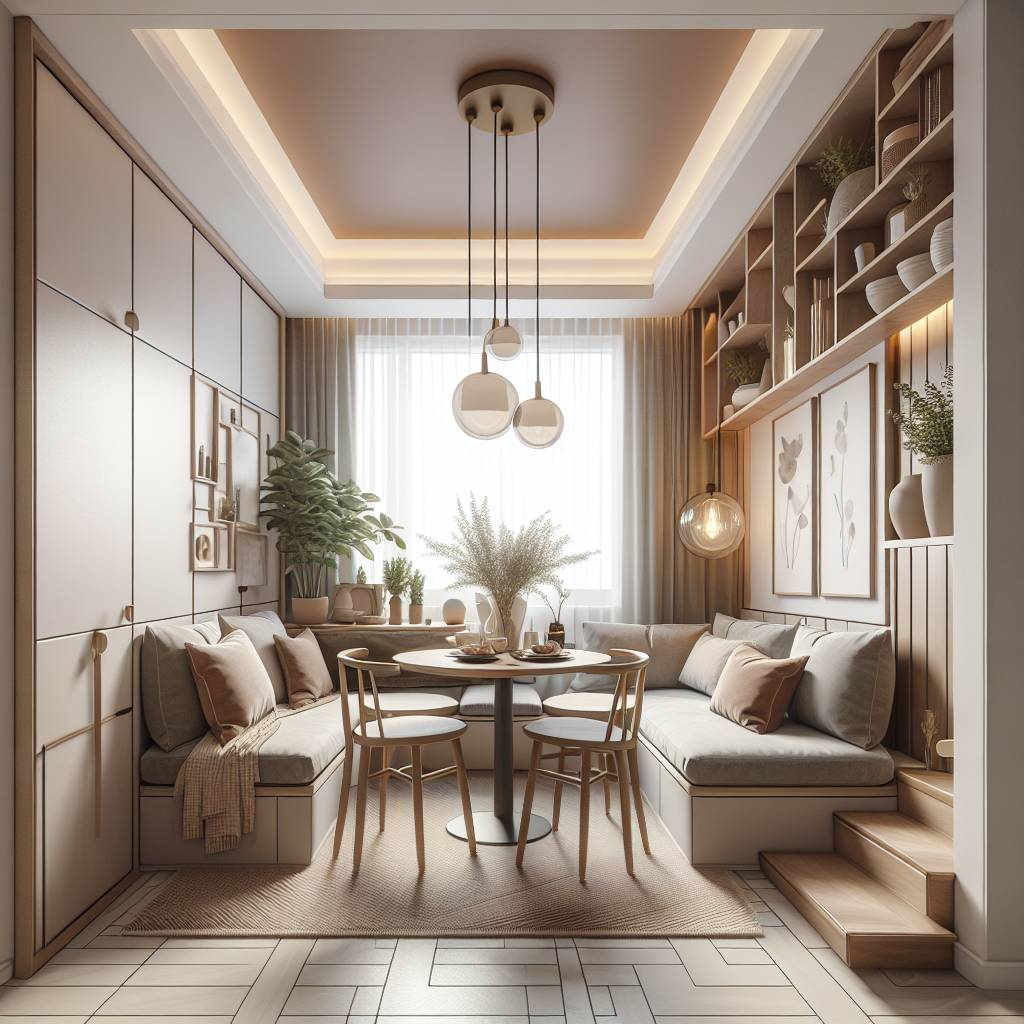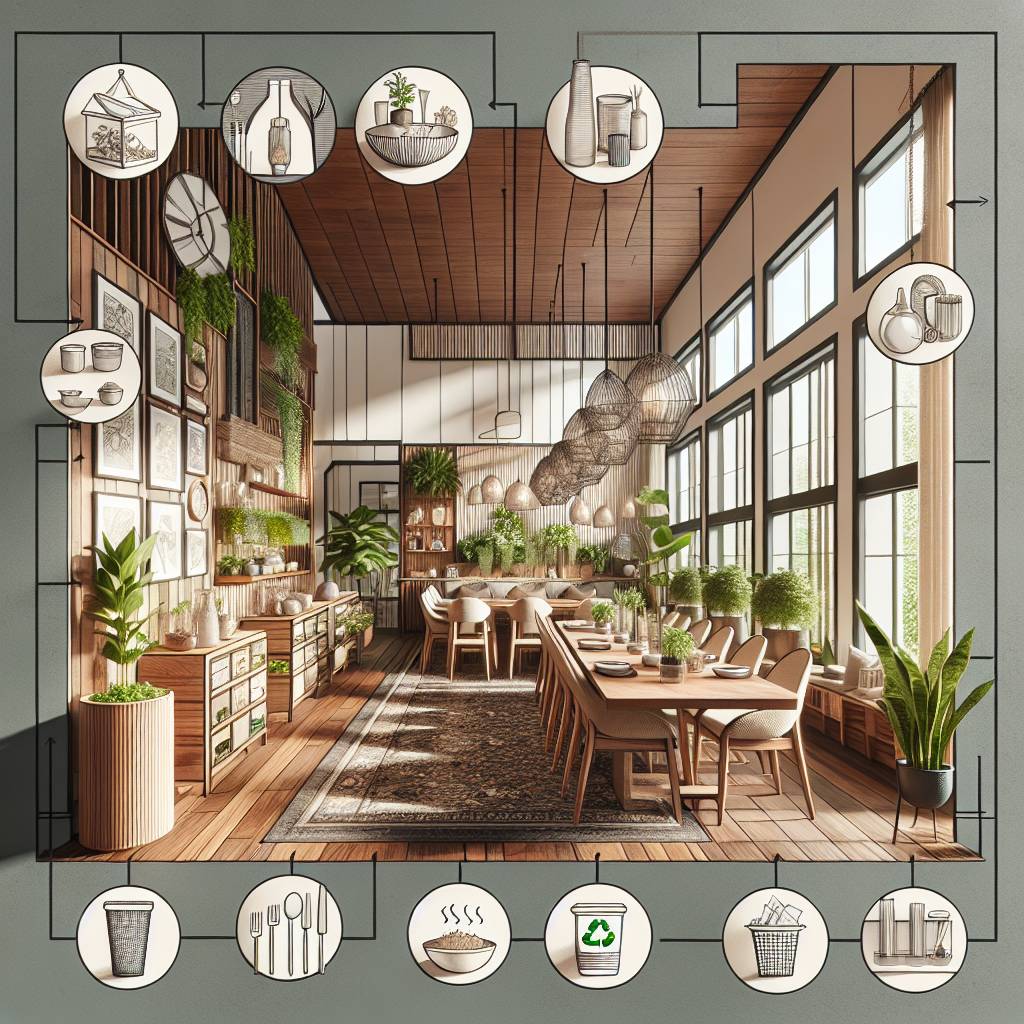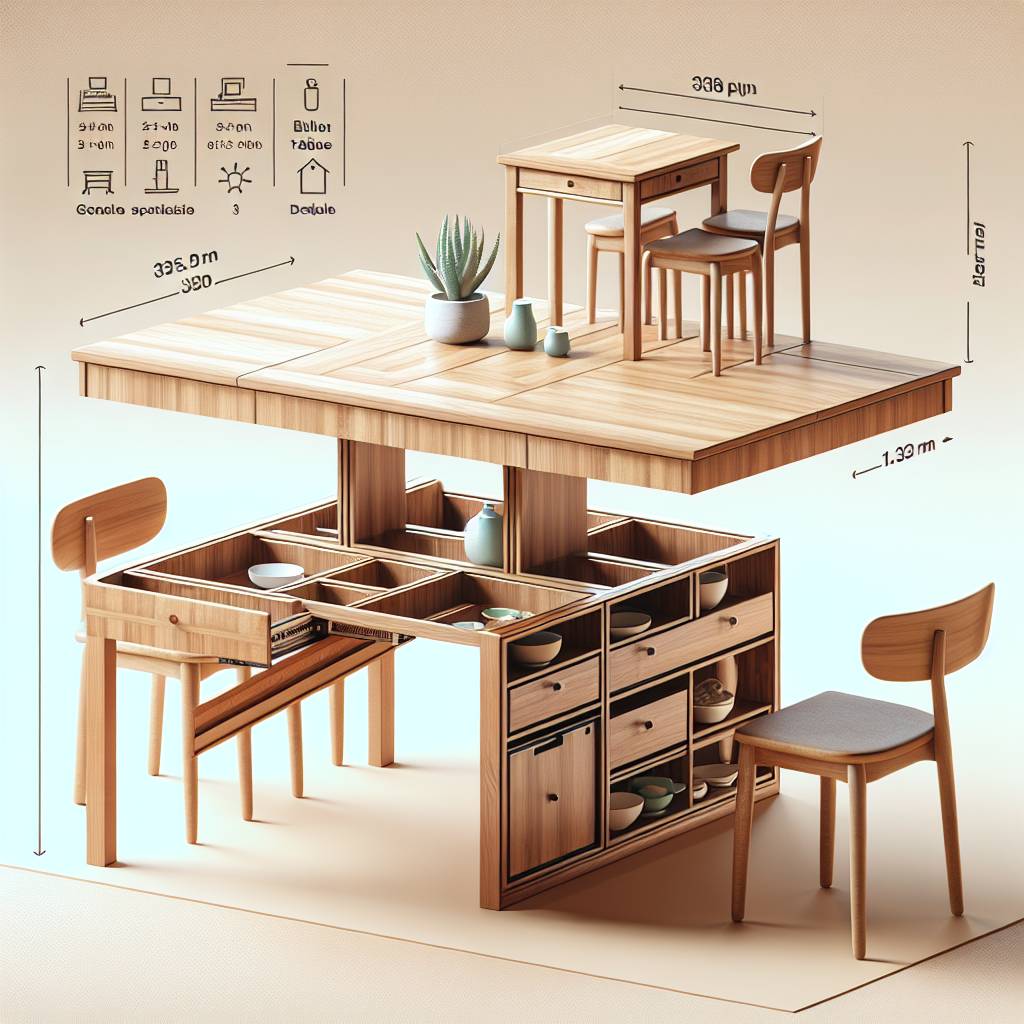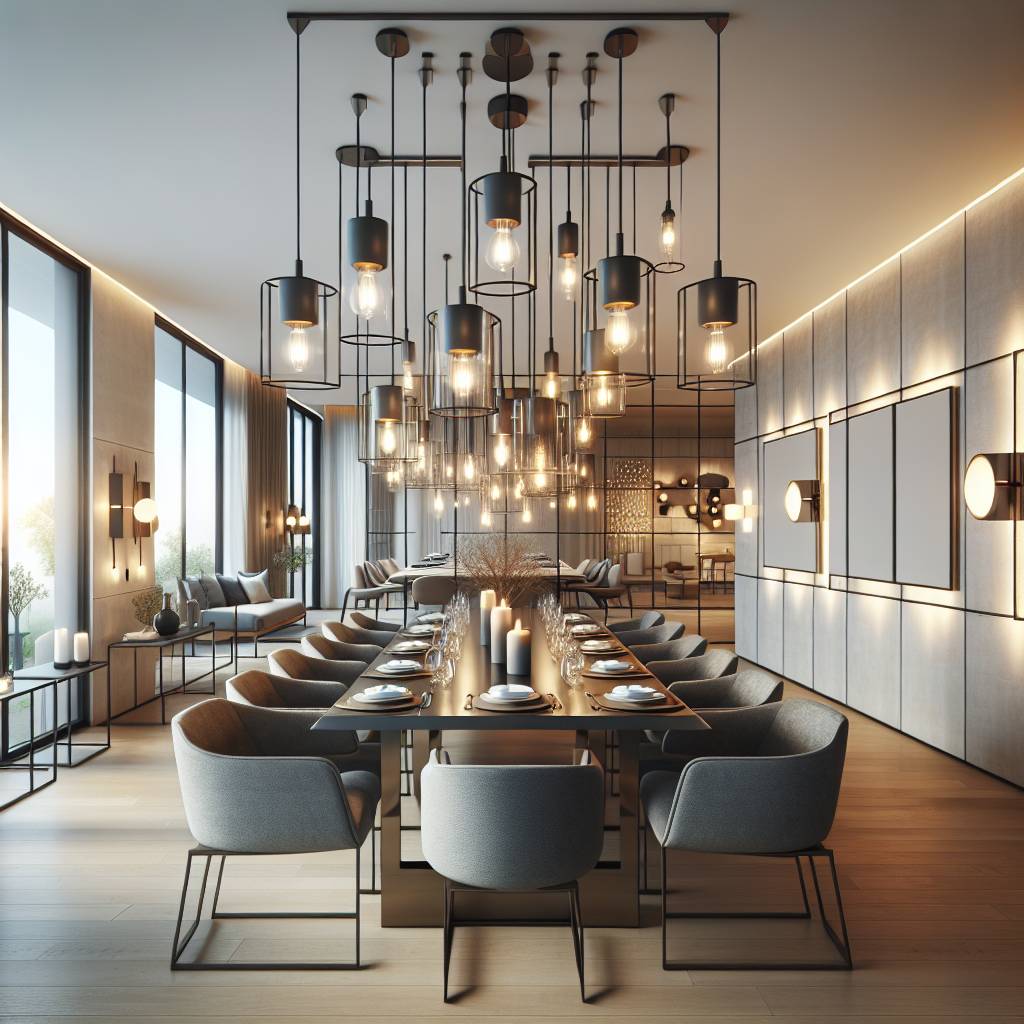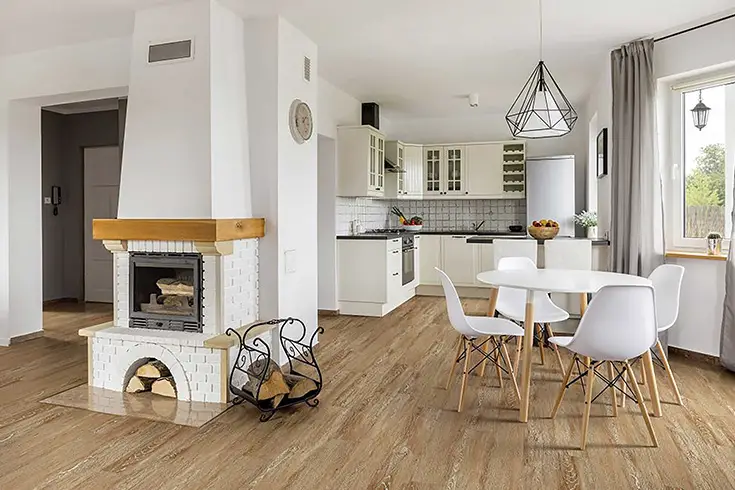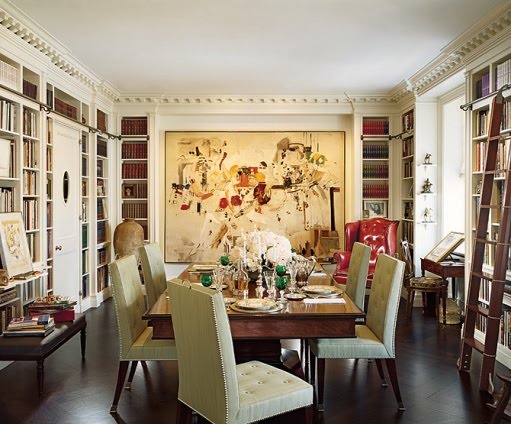Finding the perfect seating arrangement for a cozy dining space can be quite a challenge. However, fear not! We’ve got you covered with innovative corner seating solutions tailored specifically for small dining areas. From multifunctional benches to compact wrap-around sofas, we’ll explore the most practical and stylish options to maximize your space without compromising on comfort or style. Our mission is to help you transform that awkward corner into a functional and inviting dining nook with a banquette bench where you can savor meals with family and friends.
Key Takeaways
- When evaluating space and style in small dining rooms, consider the dimensions and layout to maximize the available area for a corner seating solution.
- Select the right size and shape for a corner dining table to ensure it fits seamlessly into the space without overwhelming it.
- Modern and farmhouse corner dining nook ideas offer versatile options to complement different interior styles and preferences, providing both functionality and aesthetic appeal.
- Prioritize comfortable and stylish seating for small spaces, ensuring that the corner bench or chairs enhance the overall dining experience without overcrowding the area.
- Integrate storage solutions with corner dining tables to optimize space and keep the dining area organized and clutter-free.
- Consider material choices for durability and aesthetics in corner tables, balancing practicality with visual appeal to create a cohesive and long-lasting dining space.
Evaluating Space and Style in Small Dining Rooms
Assessing Available Space
When considering corner seating solutions for small dining areas, it’s crucial to evaluate the available space. Measure the dimensions of your dining area, kitchen, and room to determine the maximum size of a corner dining table that can comfortably fit. This step ensures that you select a table that fits perfectly without overwhelming the limited space. For instance, if your tiny dining room measures 8 feet by 10 feet, you’ll want to ensure that the corner seating doesn’t obstruct traffic flow or make the room feel cramped.
Furthermore, consider how much space is needed for each seated person to move their chair back comfortably after finishing their meal. This assessment helps in determining whether a particular corner seating option will be suitable for your specific small dining room dimensions.
Stylistic Considerations
In addition to evaluating space and assessing the overall style of your small dining room, it’s important to choose a corner seating solution. Look at elements such as existing furniture, color schemes, and decor themes within the room. For example, if your limited space has a modern aesthetic with clean lines and minimalist furniture pieces, you may want to opt for a sleek and contemporary corner dining set that complements this style seamlessly.
Moreover, take into account any architectural features or unique design aspects present in your tiny dining room. These could include alcoves or built-in shelving units which might impact where you place your new corner seating arrangement. By doing so, you can ensure that any chosen solution not only fits spatially but also integrates harmoniously with the existing design elements.
Exploring Layout Options
Exploring different layout options is essential when seeking out ideal corner seating solutions for small dining areas. Consider various configurations such as L-shaped benches with a compact table or modular pieces that can be customized based on available space constraints.
For instance:
- An L-shaped bench paired with a round pedestal table could maximize seating capacity while maintaining an open feel.
- Modular banquettes offer flexibility in configuration and can be tailored precisely to fit within challenging spaces.
- Wall-mounted drop-leaf tables provide versatility by folding down when not in use while still offering adequate surface area during mealtimes.
Selecting the Right Size and Shape for a Corner Dining Table
Ideal Size Based on Seating Needs
When choosing a corner dining table for your small dining area, it’s crucial to consider the number of people you want to seat comfortably. The size of the table should accommodate your seating needs without overwhelming the space. For example, if you have a family of four, a square or rectangular corner table with dimensions around 48 inches by 48 inches could be suitable. This allows ample room for each person while optimizing the available space.
Another factor to consider is how much space you’d like between each seat and at the corners of the table. A general rule is to leave about 24-30 inches between chairs to ensure easy movement and comfort during meals. This spacing consideration ensures that everyone can sit down and stand up without feeling cramped in your small dining area room.
Complementary Shape for Layout
The shape of your corner dining table plays a significant role in maximizing both function and flow within your small dining area. If your room has limited space, round or oval tables are excellent options as they provide better flow compared to traditional rectangular tables. Their lack of sharp corners makes it easier for people to move around them in tight spaces, such as a dining room.
For instance, an oval-shaped corner table could fit seamlessly into an L-shaped nook while allowing more flexibility when arranging chairs around it compared to a square or rectangular one. Round tables in a room create an inviting atmosphere conducive to conversation due to their symmetrical design which enables everyone seated at the table feel equally included.
Modern and Farmhouse Corner Dining Nook Ideas
Sleek and Minimalist Designs
Sleek and minimalist designs offer a contemporary aesthetic. These room designs often feature clean lines, smooth finishes, and a neutral color palette. A stylish breakfast nook with a modern flair and dining room furniture for small spaces can maximize space while adding an elegant touch to the area. Consider incorporating built-in benches with storage compartments underneath to keep the space clutter-free.
For lighting, a trendy pendant light above the table can enhance the modern vibe of the nook. It’s essential to choose furniture that complements this style, such as streamlined tables and chairs in materials like metal or glass. Opting for a corner bench with cushions upholstered in leather or faux leather can elevate the overall look.
In terms of functionality, consider integrating multifunctional elements like fold-down tables or extendable surfaces that can accommodate varying numbers of diners without compromising on style.
Rustic Farmhouse Charm
On the other hand, those seeking a more traditional and cozy ambiance might prefer farmhouse-inspired corner dining nooks. These spaces often incorporate warm wood tones, distressed finishes, and comfortable textiles to create an inviting atmosphere within a small dining area.
A farmhouse-style breakfast nook typically features wooden benches or chairs paired with a sturdy table crafted from reclaimed wood or finished in a weathered texture. To enhance the rustic charm further, consider accessorizing with vintage-inspired decor elements such as mason jar vases filled with wildflowers or woven baskets for storing linens.
To illuminate this charming setting effectively, opt for soft ambient lighting fixtures such as classic chandeliers or wrought iron pendant lights that exude warmth throughout the space.
Ultimately,corner seating solutions for small dining areas should reflect personal taste while maximizing comfort within limited spaces. By blending stylish design elements with practicality tailored to individual preferences—whether through modern sophistication or rustic allure—a well-curated corner dining nook can transform even the smallest spaces into inviting retreats perfect for enjoying meals.
Comfortable and Stylish Seating for Small Spaces
Compact Chairs and Stools
When dealing with small spaces, it’s crucial to choose seating options that don’t overpower the area. Opting for compact chairs or stools can provide the necessary comfort without overwhelming the space. These pieces of furniture are not only functional but also add a touch of style to your dining area. For instance, you might consider sleek, modern bar stools that tuck neatly under the counter when not in use.
Consider upholstered seating options as well. Linon Talon Pine Wood Patio Conversation Indoor is a great example of an upholstered chair that offers both comfort and style while being suitable for small spaces. The upholstery adds a cozy feel to the dining nook without taking up much visual space.
Space-Saving Alternatives
Exploring space-saving alternatives like built-in benches or banquettes can be an excellent solution for creating stylish seating in small dining areas. A built-in bench along one wall allows you to maximize floor space by eliminating the need for extra chairs around the table. This option creates a streamlined look and provides ample seating without cluttering the room.
Consider window seats as part of your corner seating solution. Window seats not only offer additional seating but also make perfect use of what would otherwise be dead space in a small room.
Storage Solutions Integrated with Corner Dining Tables
Maximize Functionality
When searching for corner seating solutions for small dining areas, it’s essential to prioritize maximizing functionality. Look for corner dining tables that come with built-in storage compartments. These can include shelves or drawers, allowing you to keep dining essentials within easy reach. By opting for a table with integrated storage space, you can efficiently utilize the available area in your small dining space without sacrificing style or comfort.
Consider innovative designs that offer hidden storage solutions, such as lift-top tables. These types of tables provide extra storage while maintaining a sleek and uncluttered appearance in your compact dining area. With these integrated storage features, you can neatly tuck away items like placemats, napkins, and other accessories when they’re not in use.
Explore Various Designs
Furniture stores offer a wide range of options. Take the time to explore various designs and styles that align with both your functional needs and aesthetic preferences. For example, some corner tables feature open shelves underneath the tabletop, providing convenient access to frequently used items like dinnerware or serving dishes.
Consider wall-mounted shelving units near the corner seating area as an alternative solution for extra storage. This approach allows you to optimize vertical space while keeping the floor area beneath the table clear and open—a crucial consideration in smaller dining spaces.
Material Choices for Durability and Aesthetics in Corner Tables
Solid Wood
Choosing the right materials is crucial. Solid wood is an excellent option for durability, making it ideal for high-use areas. It’s sturdy and can withstand daily wear and tear, ensuring your corner table remains in top condition.
Solid wood tables are available in various types such as oak, maple, or cherry. Each type offers unique grain patterns and colors, allowing you to select a material that complements your dining area’s aesthetic. Solid wood provides a timeless look that can seamlessly blend with different interior styles.
Glass or Acrylic Tabletops
In addition to durable options like solid wood, considering glass or acrylic tabletops can be beneficial when dealing with limited space. These materials create an illusion of spaciousness in small dining rooms due to their transparent nature. By allowing light to pass through them, glass or acrylic tabletops help make the area feel more open and less cramped.
Glass tabletops also offer versatility by pairing well with various chair styles and colors while adding a modern touch to the overall decor. On the other hand, acrylic tabletops provide similar benefits but are lighter than glass and less prone to breakage.
Finishes and Textures
Exploring different finishes and textures within each material category allows you to find an option that not only suits your desired aesthetic but also enhances the overall look of your dining area. For example, if you opt for a solid wood table, consider finishes like distressed or glossy surfaces based on your preferred style.
Moreover, composite materials combining elements of both natural fibers (such as pine wood) along with synthetic resins offer additional options worth exploring when seeking durability combined with aesthetics.
Designing a Multi-Purpose Dining Space in Compact Areas
Multi-Functional Furniture
When designing a stylish dining space in a small dining area, it’s crucial to maximize every inch of available space. One effective way to achieve this is by incorporating versatile furniture pieces that can serve multiple functions. For instance, consider investing in convertible dining tables that can be expanded or folded as needed. These tables provide the flexibility to accommodate both intimate meals and larger gatherings without taking up unnecessary space when not in use.
Think about integrating a desk or workspace into your corner dining area for added functionality. This allows you to create a multi-purpose zone where you can enjoy meals while also having a designated spot for work or study. By combining these elements, you can make the most of your limited dining space without compromising on style or practicality.
Optimizing Every Inch
When dealing with a small dining area, every square foot counts. Therefore, it’s essential to carefully plan and utilize the available space efficiently. Consider how each piece of furniture contributes to the overall layout and functionality of the room. For example, instead of using separate pieces for dining and work areas, look for solutions that seamlessly blend these functionalities together.
Visual Tricks to Enhance the Perception of Space
Strategic Use of Mirrors
Strategically placing mirrors in a small dining area can create an illusion of a larger space. When positioned opposite a window, mirrors reflect natural light and views from outside, making the room feel more spacious. They also help in bouncing light around the room, brightening up dark corners and creating a sense of depth.
Mirrors are excellent for enhancing the perception of space by adding visual interest without cluttering the area. For example, hanging a large mirror on one wall or using mirrored furniture pieces can effectively expand the visual boundaries of your dining area. By doing so, you’ll be able to make even the smallest corner seating arrangement feel more open and inviting.
Leveraging Natural Light
Leveraging natural light is crucial when trying to maximize space perception in compact dining areas. Keeping windows uncovered or using sheer curtains allows ample daylight to filter into the room, thereby reducing shadows and making it appear more expansive. The absence of heavy drapes or blinds enables an unobstructed view outside while illuminating every nook and cranny within your dining space.
Light-colored walls and furniture further complement this effect by reflecting natural light throughout the room. Opting for pale hues such as white or pastels helps create an airy ambiance that visually enlarges even the tiniest eating nooks.
Utilizing negative space is another effective way to enhance spatial perception in small dining areas. Negative space refers to empty spaces around objects that allow them to stand out distinctly. In interior design terms, negative space plays a vital role in preventing overcrowding and maintaining an open feel within limited spaces.
Affordable and Functional Corner Bench Dining Sets
Style and Functionality
. These sets not only maximize space but also provide a cozy dining experience. You can discover budget-friendly corner bench dining sets that cater to both your aesthetic preferences and practical needs.
Consider the piece nook corner dining set from Riverbay Furniture as an example of an affordable yet stylish option. This set features a corner banquette with benches, providing ample seating while utilizing the often-underutilized corner space in a small dining area.
Removable Cushions for Easy Maintenance
Look for corner bench dining sets with removable cushions as they offer easy cleaning and maintenance. The ability to remove cushions allows you to thoroughly clean them, ensuring that your seating area remains fresh and inviting for every mealtime.
For instance, the Riverbay Furniture corner dining table set includes benches with removable cushions, making it effortless to keep your dining area tidy. This feature is especially beneficial when dealing with spills or stains, as you can simply remove the cushion covers for washing without any hassle.
Customizable Benches for Small Spaces
In small dining areas, adjustable benches are invaluable as they allow you to customize the seating arrangement according to your specific space requirements. Opting for adjustable benches ensures that you can make the most out of your limited space without compromising on comfort or style.
When considering purchasing a riverbay furniture corner dining table, look for options that include adjustable benches. These versatile pieces enable you to create a snug fit within your small space while still accommodating varying numbers of diners during meals or gatherings.
Final Remarks
You’ve now explored a plethora of creative solutions for maximizing dining space in compact areas. From selecting the right size and shape of a corner dining table to integrating storage solutions and leveraging visual tricks, you’ve gained insights into crafting a multi-purpose dining space that’s both stylish and functional. Remember, it’s not just about fitting furniture into a small area; it’s about creating an inviting atmosphere where you can enjoy meals comfortably.
Now armed with these ideas, it’s time to roll up your sleeves and transform your small dining area into a cozy and efficient space. Whether you opt for a modern or farmhouse style, prioritize comfort, style, and practicality. Embrace the challenge of designing within constraints, and let your creativity flow. With the right approach, even the tiniest nook can become the heart of your home. Happy designing!
Frequently Asked Questions
What are some space-saving corner seating solutions for small dining areas?
When dealing with limited space, consider using a corner bench or a compact dining nook. These options can efficiently utilize the available area while providing comfortable seating for your small dining room.
How can I make my small dining area appear more spacious?
To create an illusion of space in a small dining area, use visual tricks such as strategically placing mirrors and opting for furniture with slim profiles. Choosing light-colored paint and incorporating adequate lighting can help open up the room visually.
What should I consider when selecting the right size and shape for a corner dining table?
When choosing a corner dining table, ensure that it fits proportionally within your space without overwhelming it. Consider the number of people you want to accommodate and measure your available area to determine the ideal size and shape that will suit your needs.
Are there any multi-purpose design ideas for compact dining spaces?
Incorporating multi-functional furniture like extendable tables or benches with built-in storage can maximize functionality in compact dining areas. This allows you to adapt the space based on different needs, whether it’s hosting guests or simply enjoying everyday meals.
How do I select materials for durability and aesthetics in corner tables?
Opt for durable materials like hardwood or metal that can withstand daily use while adding aesthetic appeal to your corner table. Consider factors such as maintenance requirements, style preferences, and how well they complement other elements in your small dining area.
